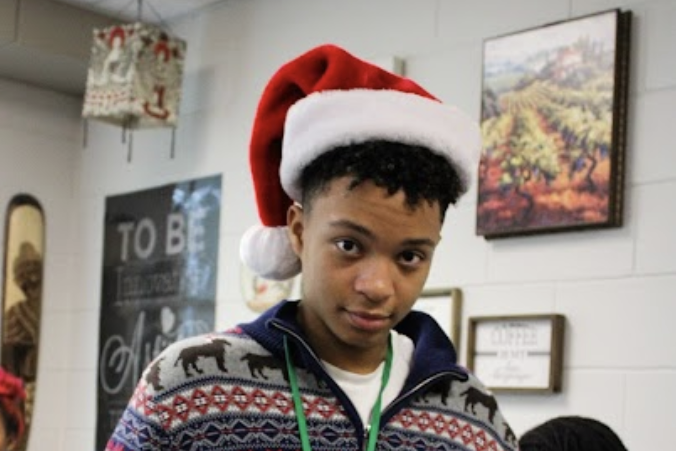‘Tis The Season
ENN Photo Staff
Ho Ho Ho! December brings forth many winter holidays such as Kwanzaa, Hanukkah, and Christmas. Although these holidays tend to get bunched together, each celebration has its own attributes and significance, despite their similarities.
Kwanzaa originated in 1966 and was meant to be a day for Black Americans to restrengthen their African roots after disconnecting from that culture due to numerous factors. The week-long affair has parades, parties, and gatherings. Junior, Jaylene Narco, participates in various Kwanzaa traditions.
“We have a feast and give gifts. We dance, and then the older people of the family tell stories. We also light candles for each day, so that is seven days in total. Each candle has a different meaning, one of them is called Nia which means purpose. The other ones mean unity and stuff like that. Ultimately it’s about spending time with friends and family,” explained Narco.
Christmas is a Christian holiday that celebrates the birth of Jesus Christ. Its main components include a Christmas tree and gift-giving. As well as songs, food, and Santa Claus. Senior, Kennedy Baccus, says she enjoys spending time with family during Christmas.
“My favorite part is spending time with my cousins. They’re always a lot of fun and we switch houses every year. We’re from New Orleans so for dinner we’ll make turkey, gumbo, and other foods,” said Baccus.
The last one of the bunch, Hanukkah, celebrates when Judah rededicated the Temple to the Hebrew God. It’s a Jewish holiday and an 8-day affair. Like Kwanzaa, it also deals with lighting some sort of candle. Academic Associate Principal, Shira Fuller, explains how Hanukkah involves different cultural foods.
“We have something called Sukanya which is just the Hebrew for sweets, so you´re supposed to make sweets during that time as a “sweet” way to celebrate. And then of course potato latkes, which are basically just hash browns made slightly differently. They’re supposed to be fried in specific oil because it cannot be animal grease,” stated Fuller.
Christmas is arguably the most popular holiday out of the tree and it has led many to wonder if the other holidays get as much recognition/appreciation. To put it into perspective, about 92% of Americans celebrate Christmas. While 3% celebrate Kwanzaa and 5% celebrate Hanukkah. Senior, Griffin Biddle, believes it’s due to a lack of coverage in general.
“You always see Christmas commercials on the TV, Christmas songs on the radio, and Christmas decorations in the stores, but you don’t ever see the same for Kwanzaa and Hanukkah. If there was more stuff promoting the holidays, like commercials, for example, I definitely feel like there would be more representation for the people who celebrate those holidays,” said Biddle.
These factors could be attributed to race and religion. Even though Christmas is a Christian holiday, many non-Christians partake in it, despite its meaning. The same cannot be argued for Hanukkah and Kwanzaa since they are very specific holidays with specific ways to celebrate. In contrast, a variety of people celebrate Christmas in a variety of ways. Academic Associate Principal, Shira Fuller, says that she has no problem with non-Jews celebrating Hanukkah.
“I don’t think it’s bad. I have friends who are not Jewish who celebrate Passover. I think anytime anyone wants to try, like experiencing another religion or another tradition that can only expand their minds, you know what I’m saying? Why would I be upset with that? It’s beautiful,” said Fuller.
Similarly, Teacher, Matthew Gartman, has the same viewpoint.
“It seems rude to just say ‘Hey, I don’t celebrate it so I’m not going to come visit y’all.’ Also, it’s much less of a religious holiday for a lot of people, than it was in the past,” said Gartman.
Hanukkah, Kwanzaa, and Christmas are arguably the most prominent winter holidays in America. Even though they have similar elements such as a plethora of food and gift exchanges, the differences are also easily highlighted. However, one common theme seems to remain the same regarding all three: Spending time with loved ones.


